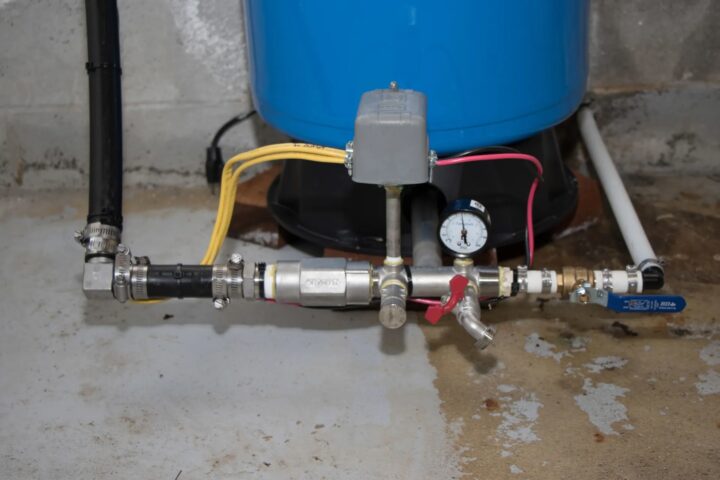The following contribution is from another author.
Ensuring a reliable water supply system transcends the visible elements within our residences. Often overshadowed, the unsung heroes are the well and pressure tank, diligently facilitating a continuous water flow.
This article delves into the indispensable role of proactive maintenance for these components, presenting nuanced strategies to fortify their durability while addressing commonplace issues through preemptive measures.
Embrace these intricacies, maintain a watchful eye, and experience the lasting advantages of a meticulously preserved well and pressure tank.
Understanding the Significance of Well and Pressure Tank Maintenance
Good quality wells and pressure tanks are vital for the proper functioning of any household, and you can find such top-quality items here. A well-maintained water supply system represents an investment yielding dividends in the realms of tranquility and undisrupted water accessibility.
- Water Quality Assurance
Regular inspections and maintenance are pivotal in averting water contamination risks. Thorough scrutiny for cracks or openings in the well casing serves as a barrier, ensuring the exclusion of pollutants and the assurance of a secure and potable water source.
- Optimal System Performance
The gradual wear and tear on well components can lead to diminished water flow and pressure over time. Routine check-ups, encompassing assessments of pump efficiency and meticulous inspections for pipe leaks, serve to fine-tune the overall system performance.
- Preventing Costly Repairs
Proactive measures act as a safeguard, shielding homeowners from unforeseen and financially burdensome repairs.
The identification and resolution of minor issues during routine maintenance preemptively stave off major breakdowns, constituting a prudent investment of both time and money.
Proactive Strategies for Enhancing Well and Pressure Tank Durability
Prolonging the operational life of well systems and pressure tanks requires a blend of routine assessments and tactical methodologies.
- Routine Assessments
Establish a schedule for comprehensive assessments, preferably biannually. Examine the state of the well casing, scrutinize for any indications of corrosion, and ascertain the optimal functionality of all components.
- Mindful Water Consumption
Combine water-saving measures, including quick response to leaks, efficient machines, and wise use of water. Such programs reduce the strain on both the well pump and pressure tank, prolonging their working order.
- Protective Enclosures for Well Casings
Ensure proper sealing of the well casing to prevent contaminant infiltration. The application of a water-repellent sealant creates an extra element of protection against environmental factors, improving well system integrity.
- Visual Inspection
Frequently inspect the pressure tank for signs of leaks, rust, or corrosion. Prompt consideration of these matters reduces the probability of adverse consequences as well as damage to this tank.
A forward-thinking approach and strategy not only upholds water quality but also guards against unforeseen maintenance issues, thereby bolstering sustained efficiency and property value.
- Optimal Pressurization
Monitor the recommended pressure levels that are provided by the manufacturer for running a pressure tank. These recommendations prevent unnecessary strain on the well pump, maintaining the efficiency of the system.
- Debris Elimination
Conduct scheduled cleanings to eradicate accumulated sediment and debris within the well. Neglecting this task may compromise water quality and lead to obstructive clogs, hindering the overall efficiency of the well system.
- Customized Treatment Plan
Develop and execute a personalized water treatment plan based on test results. Address concerns such as high mineral content, bacterial growth, or the presence of harmful substances.
This proactive approach minimizes strain on the entire system, ensuring optimal functionality and averting issues like corrosion or clogging.
Common Issues and How to Prevent System Failures
Understanding prevalent issues in well systems and pressure tanks is crucial for proactively safeguarding against potential failures.
- Preventing Clogging
Regular maintenance is key to averting clogs arising from sediment build-up in well screens. Consider augmenting preventive measures with additional filtration systems to ensure the removal of finer particles that could impede water flow.
- Combatting Corrosion
Use corrosion-resistant materials for well components and apply protective coatings. Carry out regular inspection of pipes and casings for any signs of corrosion, promptly addressing the issue once identified in order to prevent further degradation.
- Avoiding System Overload
Closely monitor water usage patterns to prevent overloading the well pump and pressure tank. Educate household members on water conservation practices, underscoring the significance of mindful consumption to prevent unnecessary strain on the system.
- Prioritizing Maintenance
A consistently maintained comprehensive maintenance schedule should be established and followed. System failures are caused by oversight of regular check-ups and preventive measures.
Frequently replace the worn-out components and perform periodic inspections to detect any potential problems before they degenerate.
The careful maintenance of well systems and pressure tanks is crucial in providing a stable source of water.
By recognizing the importance of regular maintenance and preemptively addressing common challenges, homeowners can fortify the efficiency and durability of their water systems.
















